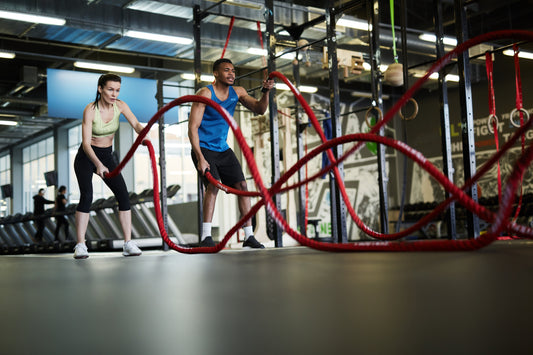RICE focused on complete rest, which while helpful for initial pain reduction, could hinder healing in the long run. Muscles and tissues need some controlled movement to stay healthy and promote blood flow. PRICE added Protection (like a splint or brace) to the mix, which is still important. However, the POLICE principle takes things a step further with a crucial concept: Optimal Loading.
Imagine your body's healing process as a construction site. Rest is like clearing the debris, but to build something strong, you need controlled movement – that's the optimal loading. Studies have shown that gentle movement within your pain tolerance helps tissues repair themselves faster and reduces stiffness.
Think of it like this: if you sprain your ankle, completely immobilising it might weaken the surrounding muscles, making you more prone to future injuries. However, carefully walking with support (following the POLICE principle) can promote blood flow, reduce swelling, and maintain strength for a quicker recovery.
How to implement POLICE to improve soft tissue injury management and recovery
What people often don’t realise is that these acronyms are not just cleverly structured to create a memorable word, but they also rank each element by order of importance, effectiveness, and scientific support. So, if you are ever stuck on what to do first, start with…
P for Protection:
This might seem like a no-brainer, but it's crucial. Protect the injured area from further damage. This could be by simply stopping the activity that caused the injury in the first place, and avoiding any level of activity that will cause pain and or make the injury worse.
Following the POLICE principle you could also look to protect and support the injured area from further damage with crutches or taping for example. This doesn't mean complete immobilisation, but rather reducing the likelihood that carrying on with your day-to-day life could worsen the injury.
OL for Optimal Loading:
This is where POLICE breaks away from the RICE and PRICE models. Here's the thing: complete rest can slow down healing and lead to muscle weakness. Optimal Loading encourages specific, pain-free movement as soon as possible.
Think light walking instead of bed rest, or pain-free stretches and dynamic strengthening exercises instead of pushing through the discomfort of returning to full activity. It's a balancing act – move enough to promote healing, but not so much that you re-injure yourself.
Now, every injury is different, so there's no one-size-fits-all approach to optimal loading. The best exercises for you will depend on what's been injured and how you normally move and what sport and activity you engage in. This is why it is so important to seek the advice of a specialists as soon as possible to get the advice and diagnosis that you need to get back to normal movement.
I for Ice:
Ice leads the way as one of the basic principles of early treatment and most research has focused on the analgesic (pain relieving) effect of icing.
Ice therapy also causes the blood vessels to constrict and send blood (and heat) back to the core in response to the reduction of the skin surface temperature. This also contributes to a reduction in swelling and inflammation but remember to maintain optimal loading and include range of motion exercises following any period of rest combined with ice therapy.
However, applying ice for too long can be detrimental to the healing process. Damage can be worsened if blood flow is reduced for too long and the risk of skin burns, and nerve damage increases with prolonged exposure to excessive cold.
We would recommend applying ice in 15–20-minute intervals several times a day, especially in the first few days after injury.
C for Compression:
Whilst clinical studies into compression are lacking, compression can still be helpful in reducing inflammation and pain, especially in the initial stages of injury. Compression can also help minimise swelling and you can use a compression bandage, wrap, or a specific sports compression garment; just make sure it's snug but not uncomfortable or suffocating.
E for Elevation:
Again, there is little clinical research on elevation but elevating the injured area above the heart can be said to help reduce swelling. Think propping up your sprained ankle with pillows on the sofa while you become a temporary master of the remote control and the snack bowl!
No if you ask us, we think that there is still a missing piece in this puzzle, and it’s called…COLLAGEN.
Think of it like an extra C to make it the POLICCE principle. Yes, we know that it’s a bit of a stretch but stick with us.
Fundamentally, any soft tissue injury will have affected the structure of that soft tissue, whether it is a ligament, tendon, or muscle; and with that there has been a degradation or breakdown to the collagen fibres that give these tissues both their strength and flexibility.
Supporting any injury with an optimal dose of collagen supplementation is a proven way to both improve the speed and quality of injury recovery in the short term, but also to reduce the likelihood of reinjury in the long term.






